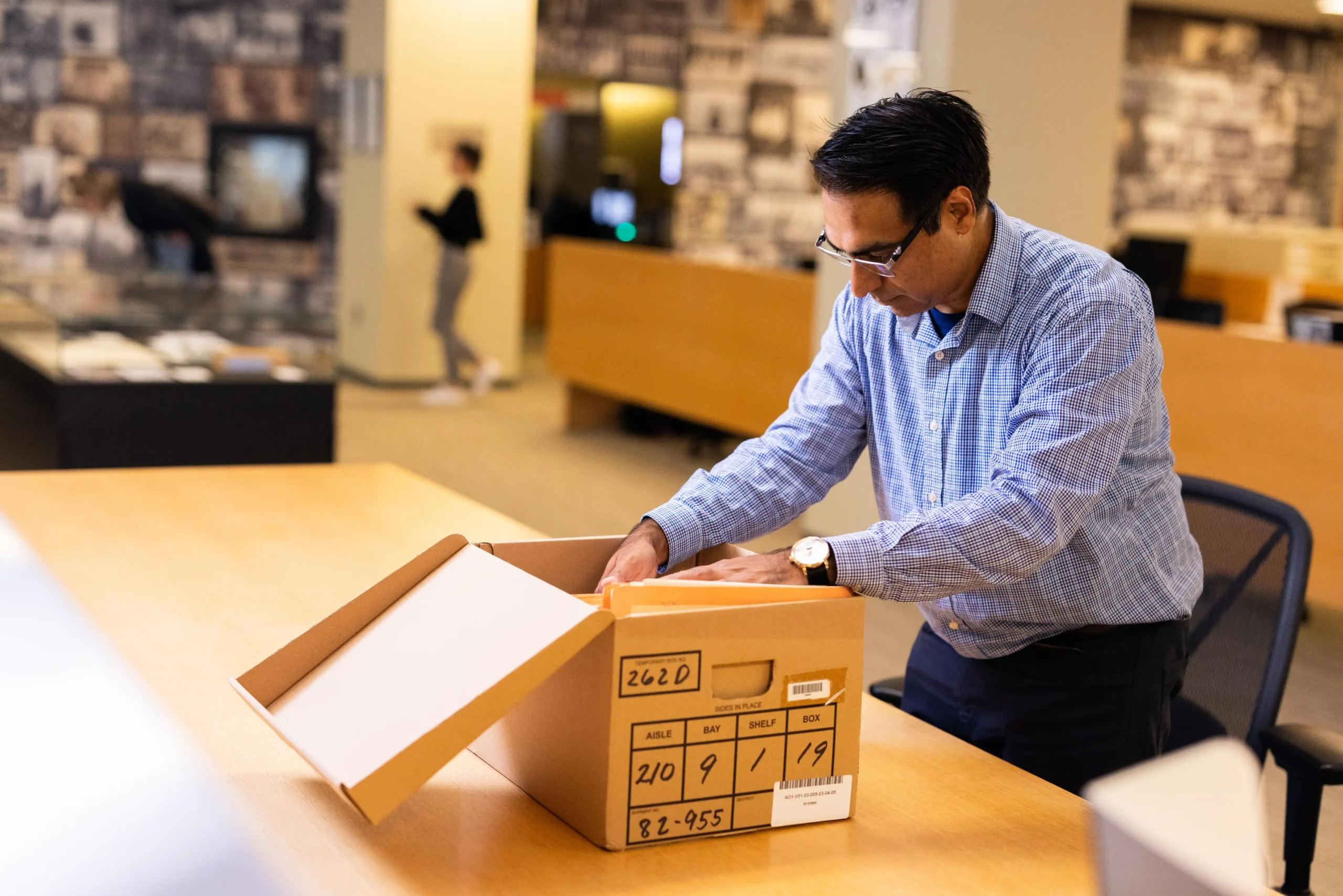Access in person
You can request most of our archival records and all library items to research in person in our Reading Room (see our hours and location page).
Archival records include:
- textual documents
- photographs
- architectural plans
- maps
- audio and film recordings
- digital records
Identify what you would like to research in our Collection Search and then submit a request to view it in advance or fill out a paper request form (available at a reference desk in the Reading Room).
Retrieval times
The time it takes to retrieve records from our vaults depends on the physical format and access conditions of the records you have ordered.
Once your order has been received by a reference archivist, records without restrictions and not needing conservation treatment will be retrieved according to our standard schedule.
Note: all records must be returned to the reference desk 30 minutes before building close.
Loading table data…
Book a workstation
Once you have requested your records, you can book a Reading Room workstation to have your materials ready for you when you arrive.
To book a workstation, please provide:
- your name
- the date of your visit
- the order number (provided to you by an archivist)
Note: a workstation booking isn’t required to view records in person.
Book a workstationMicrofilm for self-service research
We have over 40,000 microfilm reels available for self-service research, including copies of:
- birth, marriage and death records
- wills and estate files
- court records
- land records
- historical newspapers
- personal papers
- legislation and political debates
Our complete collection of microfilm can be accessed at your leisure in the Reading Room. Use the microfilm readers in our rotunda to look at both reels and fiche. A reference archivist can show you how to load the readers and use the PowerScan application to view and save your own copies of the records to USB.
Microfilm Interloan catalogue
Some microfilm reels from our collection can be sent to your local library for free for you to research there.
Learn what you can borrow on our archived microfilm Interloan page.
Ask your local librarian to submit or modify a loan request using our online form.
Submit or modify a microfilm loan requestDigitized records
We are working to digitize more of our archival collection for you to access online.
Visit our digitized records topic page to learn more.
Reproductions
You can order copies of items from our archival and library collections for a fee.
We provide digital, print and certified copies of records that you have identified for reproduction.
You can also take pictures of items in the Reading Room for personal use provided you sign and follow our rules for self-service reproduction and abide by Canadian copyright regulations.
Learn more about our reproduction services and fees.
Accessing restricted records
Some records are restricted and can’t be freely accessed by the public. Reasons for restrictions include:
- records contain personal information of living people
- terms of the donation agreement
- records require conservation
Submitting a Freedom of Information request
If a record or series you want to view is noted as being restricted under the Freedom of Information and Protection of Privacy Act in the catalogue description, you need to submit a Freedom of Information request. A privacy analyst will review your request and determine whether you can have access to all or some portion of the records you wish to view.
Submit a Freedom of Information Request.
Accessing items requiring preservation
Some records require conservation review before you can handle them in the Reading Room. A reference archivist will inform you if a record you have ordered requires review and when you can come in to view it or have a reproduction made.
If a record is moldy, you will need to book an appointment to view it in our Preservation Services lab and sign a waiver form. A reference archivist will organize these with you. Moldy records usually can’t be sent for reproduction.

